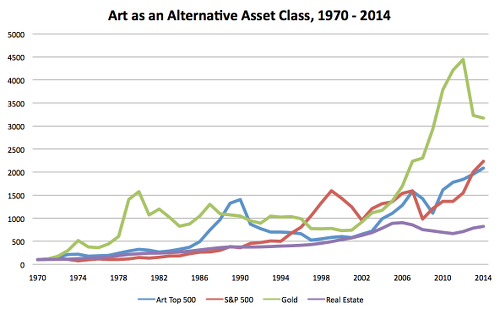Graph showing the
dip in the art market in the early 1990s as well as the striking
recovery following
the 2008/09 crisis, based on the top 500 artists and compared
to the development
of gold and real estate prices, as well as the Standard & Poor's
500 stock market
index. © Roman Kräussl / University of Luxembourg
(January 6, 2016) Researchers
at the University of Luxembourg are warning of an overheating art market, one
of the fastest-growing investment sectors of the past decade, after applying a
new bubble detection method analysing millions of auction records.
About market growth
in the art sector
Few sectors of the market have rebounded as robustly as
art—particularly contemporary art, which has doubled in value since the
beginning of the financial recovery following the 2008/09 financial market
crisis.
Pundits on the side-lines have commented that such market
growth is unsustainable, warning there is a bubble in the making that is sure
to burst, as seen in the early 1990s and in 2008/09. Headline-grabbing sales of
post-war and contemporary works for over $100 million appear to support this
argument. But is a bubble really forming?
Market bubbles are generally defined as a dramatic
escalation in the volume of trading in assets at prices that exceed their
fundamental value, followed by a sudden collapse. Rational expectations put the
fundamental value of an asset as equal to its expected discounted cash flow.
For most assets it is relatively easy to project this value—for example through
dividends on stocks or rent on real estate. In the case of art, however,
returns can rarely be correlated to costs of production.

